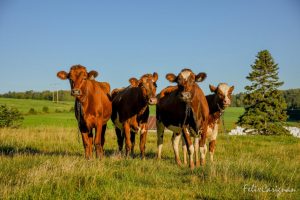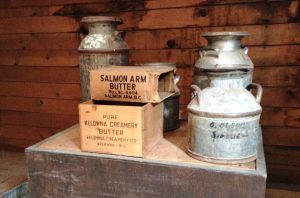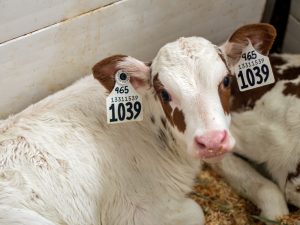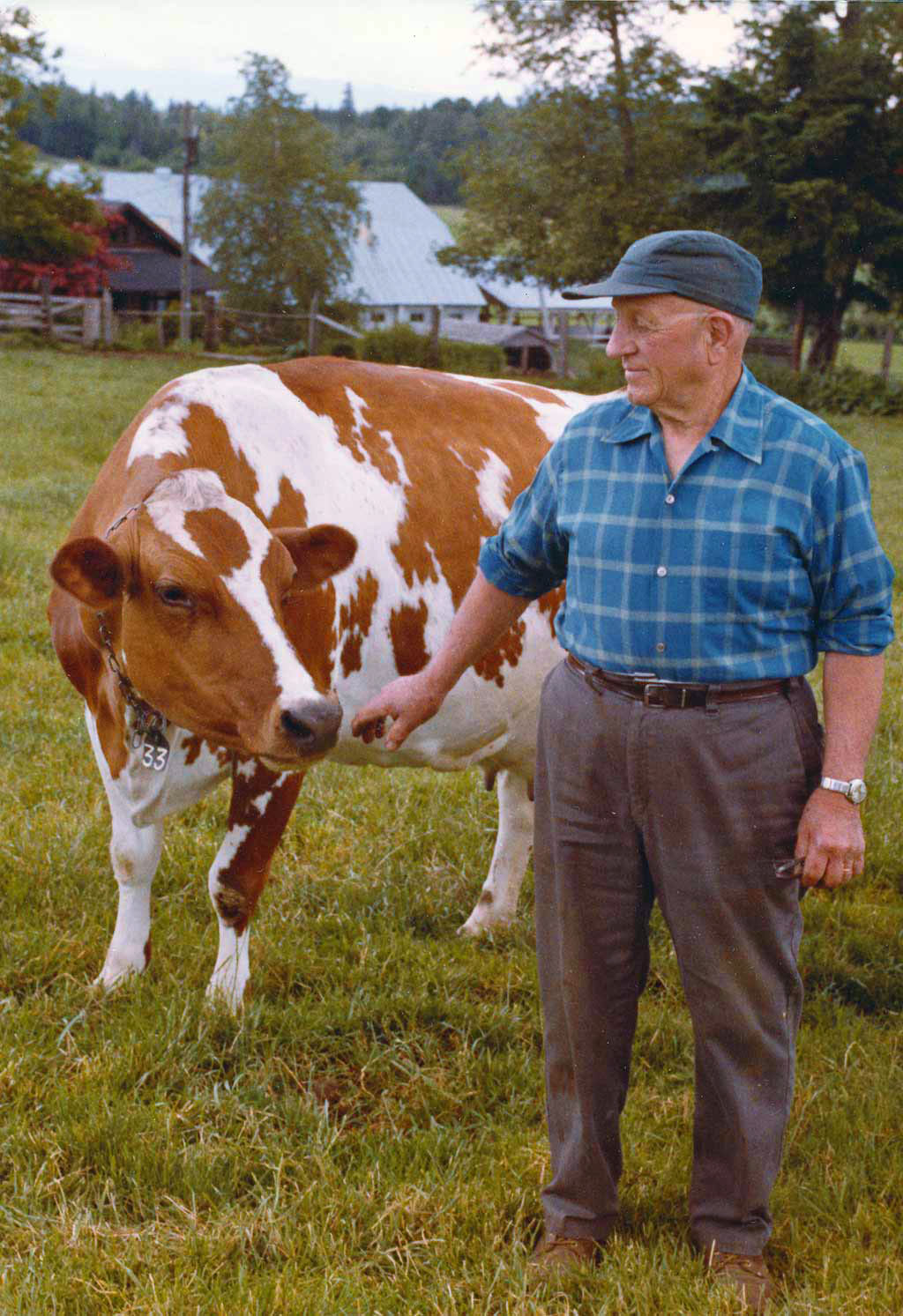The Ayrshire Breed
The Ayrshire dairy breed originated in the County of Ayr, Scotland as a result of cross-breeding. There is evidence that several breeds were crossed with native cattle, although the exact mix is lost to records.
The breed was first called Dunlop, then Cunningham, and by 1814 was formally recognized as Ayrshire. Early Ayrshires were black, with today’s distinctive red and white markings appearing around 1800. They were sturdy and strong from the harsh climate and mountains of Ayr, and until improved through cross-breeding, were quite small and considered poor milkers. In spite of this, few other dairy breeds could match the hardiness of the Ayrshire and they easily adapted to Canadian temperatures. Today’s Ayrshires are medium-sized cattle and weigh approximately 550 kilograms at maturity. They are resilient and adapt well to different dairy management systems.
The first Ayrshires arrived in Canada in the early 1800s, brought by Scottish settlers and now make up about three per cent of dairy cattle in Canada. By the 1900s, the dairy industry was well-established in Quebec and Ontario and Ayrshires were becoming known for their milk production and adaptability. Today, there are over 10,000 dairy farms in Canada with 1.4 million milking cows, primarily Holsteins. British Columbia has 470 dairy farms, mostly located in the Lower Mainland, southeastern Vancouver Island, and north Okanagan-Shuswap area.
Dairy cattle are measured by their milk production and the milk’s butterfat content, which is the fatty portion of the milk. Milk and cream are often sold according to the amount of butterfat they contain. Ayrshires, on average, produce 24.6 litres of milk per day with a butterfat content 4.13 per cent. The Ayrshires’ butterfat content is fifth behind Jersey, Guernsey, Brown Swiss and Milking Shorthorn cattle. Holsteins, the most common dairy breed today are seventh.
Fintry’s Ayrshires, specially selected or bred by Capt. Dun‑Waters, regularly produced more milk than the average. According to Art Harrop, a dairyman at Fintry in the early years, some cows produced so much they were milked four to six times a day. When a superior quality cow was being milked, the same man would milk her each time for fear a “change of hands” would spoil her output. Occasionally a dairyman wouldn’t have a day off for almost a year, to try to beat production records. Some cows were milked into a flat pan as an ordinary milk pail wouldn’t fit under the huge udder. One dairyman swears the reason for the high quality and quantity of Fintry’s milk was due to the shovelful of chopped apples given each cow at her feedings.





